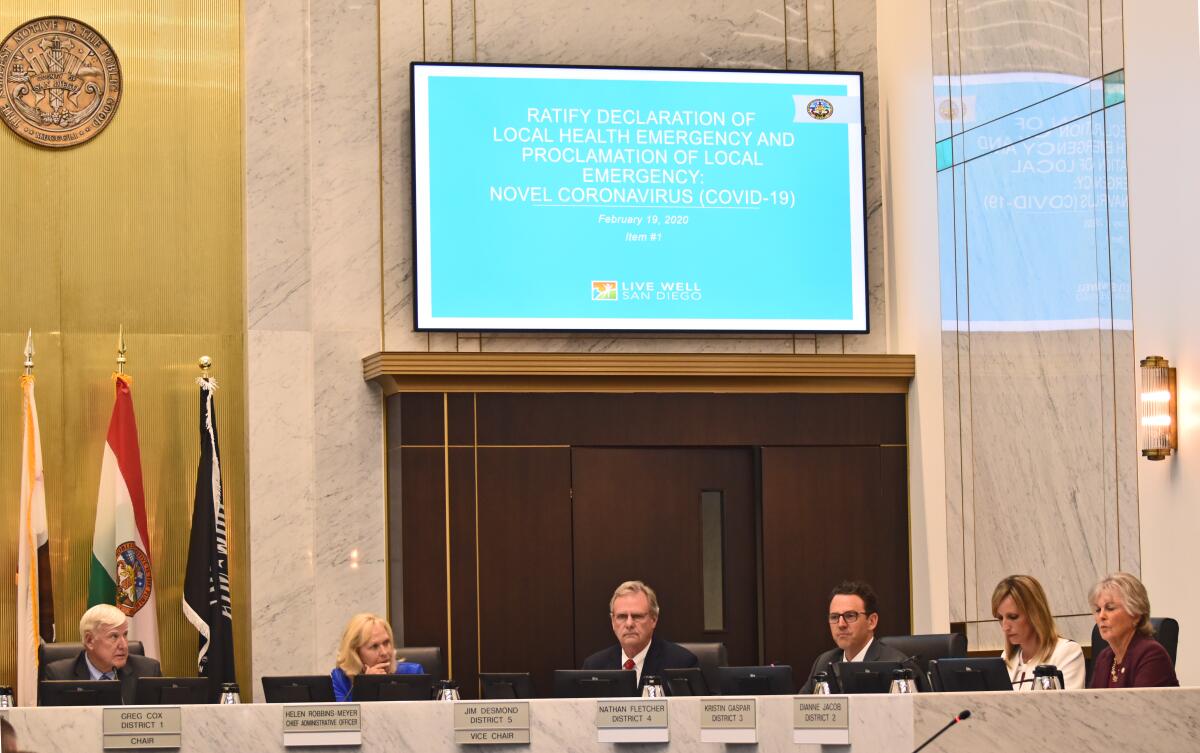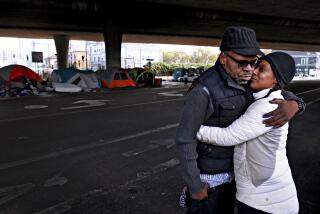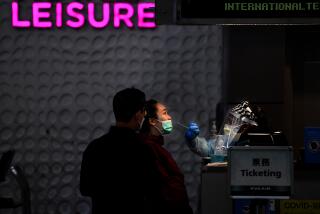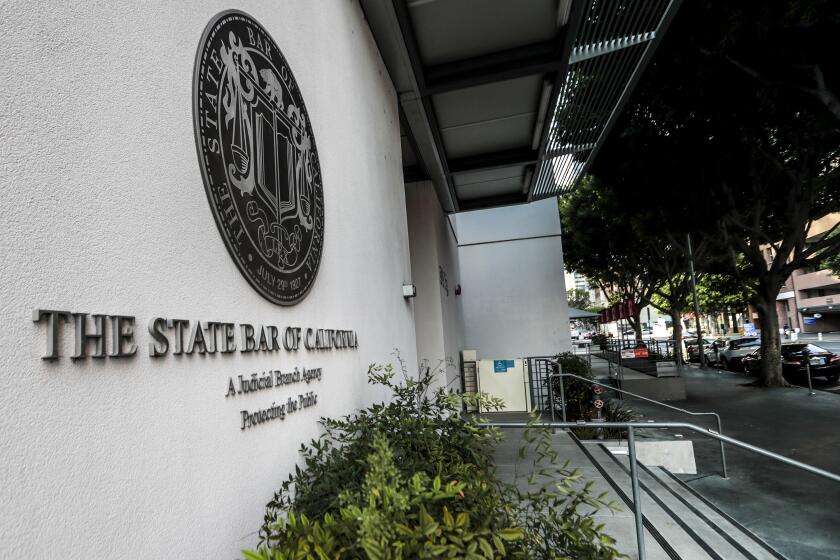San Diego County supervisors affirm coronavirus-driven emergency declaration

Home quarantine cases grow as a second group of evacuees gets ready to leave base isolation.
- Share via
SAN DIEGO — As the number of people under self-supervised home quarantine across Southern California continued to grow, and the federal quarantine at Miramar air base neared an end, San Diego County supervisors Wednesday unanimously approved a local emergency declaration, shifting gears in a public health response that experts say may grind on for months.
A few hours after the board’s vote, an extra bit of positive news appeared as UC San Diego Health announced that one of the two COVID-19 patients it has cared for since last week has been discharged home after several subsequent negative tests proved the person is no longer infected.
Dr. Wilma Wooten, San Diego County public health officer, said that 63 of the 65 remaining federal quarantine patients at Marine Corps Air Station Miramar will finish their 14 days in isolation Thursday and will be sent to their homes, just as 166 from the first group to arrive at the base on Feb. 5 were released Tuesday. One person, she said, has had their quarantine period extended to Feb. 24 due to contact with one of the two people who tested positive.
Just because Miramar will soon have no additional evacuees on its premises doesn’t mean that local vigilance will end.
Shortly before the county board took its vote, Wooten presented the latest count of those who have returned to San Diego County after visiting China but who did not visit a high-risk province where the novel coronavirus outbreak has been widespread. Wooten said her department has now been notified by federal authorities of 249 low- and medium-risk travelers who returned to San Diego County after being in China either as visitors or expatriates.
That’s 55 more than the county said it was supervising last week when it made its initial public health emergency declaration.
While travel restrictions have drastically reduced the number of people moving between China and the United States, the flow has not been entirely shut off, and Wooten said the county health department is charged with monitoring all who return for COVID-19 symptoms.
“We continue to obtain a daily list of approximately 20 to 30 names of individuals who are at medium risk and require public health supervision,” she said.
Wooten and her colleagues in the county health department made the case on Valentine’s Day, and again on Wednesday, that declaring a local public health emergency can deliver funding sources and the authority necessary to keep up with the demands for monitoring and oversight needed to make sure that, if a few travelers do end up getting sick, their infections don’t end up spreading to others in the community.
Though supervisors praised the diligence so far, they did have a few questions. Supervisor Jim Desmond noted that the border crossing to the county’s south is one of the busiest in the nation and remains so even as this new health threat spreads rapidly beyond China’s borders.
“We’re a binational region, and we’ve got about 100,000 people coming across the border every day,” Desmond said. “What is the federal government doing to ensure that we have enough resources available at our border for screenings that are necessary to make sure that we keep San Diegans well?”
Dr. Eric McDonald, medical director of the county’s epidemiology and immunization services branch, said he had just finished a joint conference call with the medical director of the Department of Homeland Security as well as representatives from the U.S. Border Patrol, U.S. Immigration and Customs Enforcement and public health representatives from every border state to discuss that very issue.
He noted that basic health status questions have long been routine for border agents and all of the agencies involved have been seeking to make sure that everyone working on the border knows what to do if they encounter someone who says they’ve recently traveled to China.
“We are working together with our state to make sure that those policies and procedures are in sync so that people just don’t show up at local [emergency departments] and cause any difficulties, but I think there is a strong effort occurring there,” McDonald said.
Sisson writes for the San Diego Union-Tribune.
More to Read
Sign up for Essential California
The most important California stories and recommendations in your inbox every morning.
You may occasionally receive promotional content from the Los Angeles Times.











